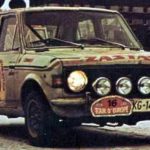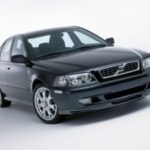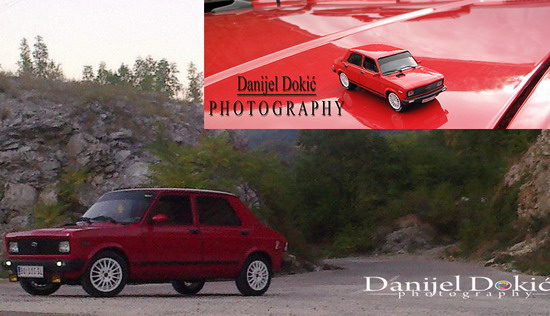Zastava 101 1971 - 2008 - Technical development
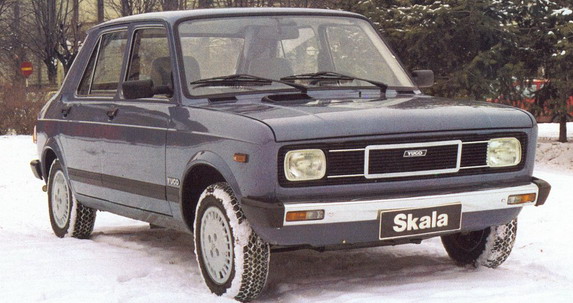
Zastava 101
Our public has always condemned Flag 101 for staying the same from start to finish of production. How much of a fallacy were we? The answer to this question is provided by the Flag 101 Club (www.zastava101.serbianforum.info).
It all started in 1967 at the design bureau FIAT factory in Turin, when Dante Giacosa, in collaboration with the design company Boano, developed the revolutionary FIAT 128 model. At the time when the car was considered only a sedan with a longitudinally mounted engine and rear-wheel drive, only the British Mini Morris and the French Simka 1100 (the first European hatchback) began to change public opinion. At that moment, Aurelio Lampredi, the creator of the FIAT 500 engine, unveiled its new, SOHC compact engine designed for the FIAT 128. Entering the market in 1969, the Fiat Eight completely knocked off its competition and became the most modern mid-range car in the world, the best-selling car in Europe and , very justifiably, wins the Car of the Year title. Dante Giacosa questioned the prototypes of the salon - sedan, familiar - station wagon, as well as the then pioneering hatchback versions of the Eight. However, market research has shown that the European public is not ready for the hatchback, and FIAT management, despite Giacosa's insistence on producing a hatchback version of the Eight, refuses to experiment with such a body model.
A parallel story takes place in 1969, in Yugoslavia, in the Red Flag Institutes under the leadership of the legendary Prvoslav Raković - now we can freely say the creator of the Kragujevac car industry. At that time, our Zastava successfully won the production of the Zastava 750 and 1300 (the popular Fića and Tristać, which were made under FIAT's license), but everything indicated that these models were already obsolete, especially when it came to exports. Iron Raković's enthusiasm was still uncompromising, and the ZCZ leadership adopted the decision to start developing a new "National Vehicle" project. The team from Zastava, led by Raković, goes to Turin and starts negotiations with FIAT on the production of a new licensed model. On the FIAT side, also enthusiastic Dante Giakosa sees an opportunity to realize his dream, the hatchback FIAT 128 (he even published the sketches in CAR magazine in 1969, in order to put pressure on his employers to listen to him). After several days of negotiations, the dice were thrown and Yugoslavia received a very favorable license for the (sudden) production of the most modern car in Europe.
The same year, proud Rakovic intrigued the public with the announcement that Zastava would produce a modern car, but without details. The public was on fire, while reporters from Yugoslavian auto magazines from various branches in the forests of the test track in Kragujevac reported and speculated about a car that was making a whole new noise on the test track. At the end of 1970, the unnamed model was introduced more closely, with a few snapshots, and the car public went into hysterics when, in early 1971, the Flag 101, a derivative of the Italian Fiat 128 with a more practical five-door, was presented to the general public on March 15, 1971 at the Car Show at Belgrade, and serial production began a year later. Immediately at the beginning of the sale, it was given the status of a new national car. Rakovic ironed out his triumph by arriving before the Federal Assembly of the SFRY, to report to the state leadership that production had begun, only with the production of the Unit, as the Slovenian Auto Magazine initially christened our Stojadin.
Prototypes adorned car dealerships, and the waiting lists were already long. Initially, two versions were offered, the standard and the De Luxe, which differed from the standard version in the seats of the red sky (the standard had the black sky), red carpet on the floor, chrome trim on the door trim, imitation wood on the panel in front of the passenger it closes the vent for the radio also by the transaxle lever, which was transparent with the Z sign inside (the standard had a black round). Also, the DeLuxe version had chrome moldings on the sills and roof edges on the outside.
Later, the standard model was slightly modified, so it received a black honeycomb cooler mask instead of a silver one, and as such, it was manufactured until 1979, with minor modifications.
Instead of DeLuxe, 1976. a new flagship 101 L appeared, which differed from the DeLuxe by the new bumpers with rubber moldings, seats and plush door trims, also located on the rear shelf. The seat back could be reversed. The mask was of a different design with two silver horizontal lines and also had a reverse light, an electric windshield washer pump, a cigarette lighter and an engine temperature gauge instead of a signal lamp, as well as a servo brake. The last batch of standard models was labeled Zastava 101 B and the seats on the Model L that fold down.
They all had an 1116cc engine with WEBER 32 ICEV 10 carburetor, Holley Europe 32 ICEV 10, IPM 32 MGV 1 or Solex C 32 DISA 20 carburetor and a compression ratio of 8,8: 1. The only engine change was in April 1976 from engine number 0076986 when a camshaft with a 20 mm camshaft instead of a 14 mm old was introduced.
In 1979, serial production of a new range of models began, which were presented a little earlier ('77 -78) Confort, Mediteran, Special, Super (SC).
The Super model was designated Zastava 101 S (Super) or SC (Super Confort) depending on the year, but they were completely identical. Models Confort, SC and Special had a bumper without bumper with black plastic ends at the ends, square headlights, a new radiator grille with two horizontal silver lines, rearview mirror, wipers and moving parts of the handle in black, small caps marked Z in black plastic on the mid-wheel instead of chrome ratchet on previous models. A rear window heater, a hand brake signal and an insufficient level of brake oil have also been installed. The upholstery door and the rear shelf are made in 4 colors: black, gray, drape-white and red-orange with a chrome trim in the middle of the upholstery.
The Special model, the strongest of the Zastava 101, had an engine speed gauge in the instrument panel, and instead of an ashtray in the middle, it had oil pressure and engine temperature gauges. The ashtray was moved to the console in front of the gear lever, which was also new. It is interesting to note that the Zastava 101 Special had characteristic parts that were fitted to the FIAT 128 RALLY in Italy, as well as the then very popular CROMODOR ABARTH CD 57 magnesium wheels.
The Confort and Special models had plastic door and wing moldings, which the other models did not have.
Model Mediterranean had 3 doors and round headlights, and other details were identical to other models from the game.
The Confort model was produced with 1116 cc and 1290 cc single-carburetor IPM 32 MGV 10 engines for 1116 and IPM 32 MGV 25/250 engines for 1290 cc engines and a 9,2: 1 compression ratio for 1116 cc and 9,1 engines: 1 for 1290 cc engine.
The SC (Super) model was manufactured with an 1116 cc engine with WEBER 32/32 DMTR 90/250 dual carburetor and a 4-2-1 exhaust branch and had a power of 64 hp.
The Special was manufactured with a 1290 cc twin-carb WEBER 32/32 DMTR 90/250 carburetor and 4-2-1 exhaust and 73 hp.
The Mediterranean model was produced with 1116 cc and 1290 cc engines, with 55 bhp and 73 bhp respectively (as in Special).
All models had a smaller steering wheel with slits on the paocos and the banner FLAG in the middle (on the siren button), while the SC / Super model in the middle had a large Z sign.
All models had head restraints on the front seats, and for SC / Super models they were integrated with the seat backs. These seats were a copy of the Porche Pilot seats, and were later called "Monuments" in our public because of the bulky appearance but also the firmness of the backrest itself, which withstands all loads and provides maximum passenger safety.
These models were manufactured until mid-1983, when they were replaced by the Zastava 101 GT / GTL 55/65, which had the appearance of a modern FIAT 128. The new Stojadins had a lot of changes over the previous ones: new, wider chrome bumpers with integrated position light and direction indicators in the front bumper instead of the front wing edge. New fridge grille with silver lines and FLAG sign, new rhomboid lateral direction indicators, side strips with silver stripe not lower part of door and front wing, new steel rim design with 4 rectangles each with two rectangles and black, metal ratchets in the middle with the Z sign on some models, or plastic small ratchets with the Z sign as in the previous model series.
The interior was adorned with a brand new dashboard in brown, with a slit-less steering wheel on the pawns with the banner FLAG in the middle, and brown tones dominated the entire interior.
The GT had a modernized dashboard similar to the previous generation, while the GTL had a brand new dashboard with two left and right switches, brand new heating and ventilation controls and a large closed cassette in front of the front passenger compartment and an open shelf above her.
A new design of the gearshift lever and handbrake handle was also applied, and a trifle cassette was installed in front of the gearshift lever. The upholstery of the door was a combination of sky-fabric in brown color and also a new design of the rear shelf that rises along with the 3/5-door.
Softer and more comfortable suspension was applied, and the vehicle itself was slightly lower, which added a lot to the stability of the road.
On the GTL, the brake system was modified and the brake cylinders were sealed, the brake fluid tank was moved from the inner fender to the battery bracket, which shortened the lines from the tank to the master brake cylinder and prevented gas plugs from forming in the system. Also on the GTL, a brake malfunction indicator was applied.
The engines were standard 1116 cc (55 bhp) single-carburetor IPM 32 MGV 12 and 1301 ccm (65 bhp) with twin-carburetor WEBER 30/32 DMTR 90/250. The only change was the use of a gas cable instead of a lever from mid-1986, as well as the use of a 4-2-1 exhaust manifold that allowed for better discharge of cylinders, contributing to greater engine power.
Since August 1986. a new type of cylinder head gasket was applied that did not fit at the first service, unlike the old one for which it was necessary to fit. The diameter of the cylinder head bolts, which is 10 mm instead of 12 mm, has also been changed.
The GT and GTL models were manufactured in 3 and 5 door versions until early 1987 when the next generation of the Yugo 1,1 / 1,3 GX was created. Exterior differences from previous generations are minimal and boil down to red sidebar strips instead of silver, 1,1 GX (or 1,3 GX depending on model) under the front wing and 3/5 door, as well as round Y instead of Z on the rear pillars and Yugo on the 3rd / 5th door, as well as completely black door handles. The steel rims with round openings (manufactured by ZMAJ from Belgrade) were returned, and in the middle there were small plastic ratchets with the mark Y. The interior is practically the same, except for the use of upholstery doors (which are still made of hardboard with a combination of sky-cloth ) and gearshift levers in gray or ocher yellow (instrument panel is still dark brown or black). The only change to the engine is the introduction of a 4-2-1 exhaust branch on all versions and the use of an ignition distributor with a depressing pre-ignition corrector instead of a centrifugal one.
The GX was manufactured very shortly, with the introduction of the new Yugo Skala 1988/55 models already in mid-65, which had a lot of changes over previous versions. The radiator grille is black with a silver bezel in the middle and silver moldings running from the bezel to the headlights on the left and right sides, an air intake on the bonnet, new plastic ratchets with the Y sign, and optional alloy wheels 5Jx13 H2 ( popularly called Corals because they were the hallmark of the YUGO CORAL AMERICA model), wider lateral moldings, YUGO inscription on the front wings above the moldings, and on 3/5 doors, the inscription Skala55 / 65 (depending on model) on 3 / 5-door, integral side windows with mirrors adjustable on the inside, new, deeper plastic bumpers in black, or metal chrome with black plastic edges, as in previous models (depending on version). The interior was then, complete in gray or ocher-yellow (depending on version), including the instrument panel and all interior details, as well as the seats, which are more comfortable than previous versions (manufactured by Filip Kljajić from Kragujevac or Ramiz Sadiku from Pec ). The door upholstery is of a completely new design, they are plastic, and a layer was applied over the plastic that imitates the fibers of the fabric, and the door handrails were changed.
On all versions, in addition to the already standard 4-2-1 exhaust branch, BOSCH electronic ignition was applied.
The Skala 65 version (1301 cc engine manufactured by DMB Rakovica) has a 5-speed gearbox and a new balance rod, as well as a new WEBER 7Y2M-RA dual carburetor with automatic suction.
The Mogul YUGO Scale was manufactured almost unchanged until 1994 (except for small changes, some models without lateral moldings and some with a new type of rearview mirror also adjustable from the inside), when, despite the general crisis in the country, some modified Models 55 C / 65 C. The most important modification was the use of a 5-speed gearbox and a new stabilizer lever (balance rod) in all versions (both 55 and 65), as well as the application of larger 240 mm diameter brake discs with Lucas Girling clamps and a wear indicator of the model Florida.

Zastava 101
The interior has a new instrument panel, while the rest is almost the same, except for the darker shade of the door upholstery (gray-black instead of gray, ocher-yellow is no longer produced from '91 -92.) and trunk light, and instead of mirrors adjustable from the inside, they are placed on the door, under the glass, from the older generation of the Coral model.
Such models were manufactured with minor modifications (the use of ratchet models from Florida models, or smaller ones that are only in the middle of the rim, and later brand new ones that are not screwed, different patterns of seating as well as upholstery), in late 2002 and early 2003 The models get narrower plastic bumpers from the 128 Scale model, a shorter radio console and an ashtray in front of the gear lever, and with the change of factory sign they get a new name and designation, Zastava Skala 55/65, instead of Yugo Skala 55/65.
Since June 2003, all models have a modified brake system, applying a new, larger power steering and master brake cylinder than the Florida model.
Production of the 3-door model was discontinued in 1990/91. years. In the middle of 2007, all models received a new, modern instrument panel with a digital odometer, a speed indicator and an electronic speedometer that receives the signal electrically instead of the cable, a new aluminum refrigerator, an internal rearview mirror was glued to the windshield, exterior mirrors from Fiat Seicenta, front wheel hubs, bearings and homokinetic joints from Fiat Punto, as well as the application of a single key to all locks on the car. At the beginning of 2008, the installation of modified rear doors with butterfly-free and integral cedar windows on all 4 doors begins.
Last, 1.273.532. a copy of Zastava 101 came off the production line of the Kragujevac factory on November 23, 2008.
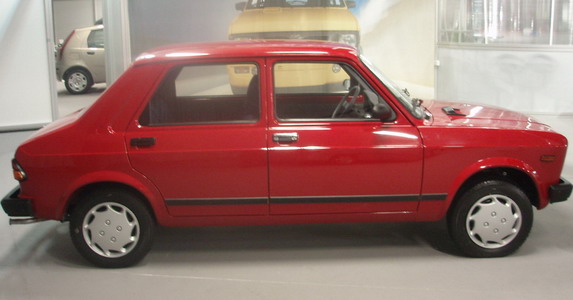
Although we said goodbye to Stojadin that 2008, it remains the cheapest used vehicle on the market, but the production of the freight version of Poly continues on the production lines of the Zastava special vehicles factory in Sombor.
If you would like to read more technical - historical data on Zastava 101, visit the Zastava 101 Club internet forum at www.zastava101.serbianforum.info, where you can register for free.
Text author: Miljan Milojkovic - Flag 101 Club
Photos: Flag - Yugo cars
Retrieved from: auto.blog.rs
Old Flags 101 commercials
Recommendation of similar texts:

Hi there, I am Mladen and I am an auto enthusiast. I started this blog years ago to help like minded people share information about latest cars, car servicing ideas, used car info, exotic cars, and auto technology. You will find helpful articles and videos on a wide variety of cars - Audi, Mercedes, Toyota, Porsche, Volvo, BMW and much more. Ping us if you have anything cool to share on latest cars or on how to make older cars more efficient, or just want to say hi!

